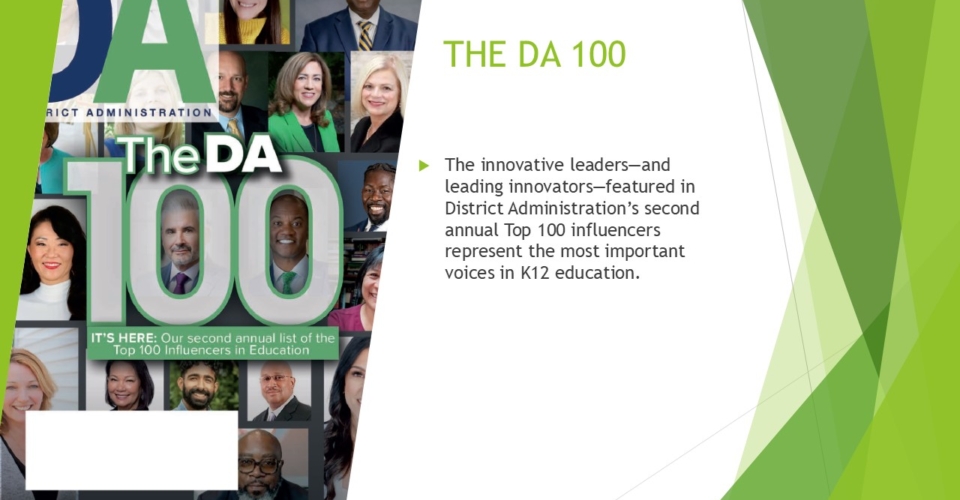As districts settle into the 2025-26 school year, many administrators may have found themselves rushing to spend leftover budget right before the academic year began.
This annual scramble forces districts into a “use it or lose it” mentality, where meeting deadlines takes priority over maximizing value. It’s a pattern that’s all too familiar, but it doesn’t have to repeat year after year.
It’s never too early to make a change and make procurement more strategic moving forward. This starts with maximizing the benefits administrators can glean from their cooperative purchasing arrangements.
Many administrators may unwittingly and understandably be leaving savings—in the form of budget, staff resources, and time—on the table. Following is an exploration and explanation of how they can make adjustments to start saving today.
Hurry up and wait—and hurry again—cycle
The purchasing process itself can feel like a cycle of hurrying and waiting. Administrators rush to make purchases to meet fast-approaching fiscal deadlines, only to get stuck waiting for approvals, board meetings and vendor responses that take up precious time.
Competitive bidding requirements, mandatory board approvals, fiscal year deadlines and grant funding windows create bottlenecks where procurement requests can sit idle for weeks.
As the environment impacting K12 education procurement continues to evolve, many school districts are navigating cooperative purchasing strategies that haven’t fully kept pace.
Traditional cooperative models can lack the flexibility required to adapt swiftly, making it more challenging to access a broad range of vendor options or secure the most cost-effective solutions when timelines are tight.
These inefficiencies compound year after year, creating a routine in which districts consistently overpay for essential goods and services within their cooperative agreements while delaying implementations that directly impact classroom readiness.
Cooperative purchasing as a strategic solution
Traditional cooperative contracts often only provide access to competitively solicited and publicly awarded contracts, leaving districts to navigate vendor relationships, compliance requirements, and procurement timing on their own.
More advanced, strategic cooperative purchasing, on the other hand, can provide districts with data insights into contract details and spend across the entire organization, turning what was once a reactive process into a proactive approach.
Modern cooperatives dig into historical spend data to find patterns, missed opportunities, and purchasing windows that line up with the academic calendar, not just fiscal deadlines. Technology platforms can consolidate multiple contracts into one platform so districts can make cross-contract purchases in a single transaction, eliminating the need to juggle separate vendor relationships.
Ongoing vendor management provides another advantage. Rather than vetting vendors one time, at the start of a relationship, modern cooperatives monitor performance, assess supply chain resilience, and maintain relationships throughout the contract term, providing districts with continuous assessments and support.
Subject matter expertise is a critical differentiator. Innovative cooperatives offer dedicated procurement specialists who understand education-specific challenges to offer districts guidance on everything from complex purchasing decisions to implementation timelines that work around the school calendar.
Cooperatives may also share anonymized data and best practices across their networks, letting districts benchmark strategies against similar schools. These real-world insight helps districts make smarter decisions and get the most out of required contracts and, critically, elevate the traditional cooperative-district relationship from transactional to a true partnership.
Warner Middle School: A success story
When Michigan-based Farmington School District wanted to create collaborative workspaces at Warner Middle School, they reassessed their cooperative purchasing strategy in order to maximize building space.
The district sought to transform unused areas into functional learning spaces for students and teachers, with three established goals: efficiency, control, and cost savings. Instead of simply accessing a traditional cooperative contract, the OMNIA Partners Region 4 cooperative provided the full suite of modern cooperative services.
The Region 4 cooperative contract delivered results on multiple fronts beyond cooperative pricing. The district received strategic consultation on space utilization, project timeline optimization that aligned with their academic calendar, and integrated vendor management that ensured seamless implementation.
Unused hallways and corridors were transformed into flexible learning spaces with seating, tables, storage, and technology integration. The project was completed on schedule, within budget, and delivered immediate value to the school community—all while maintaining full procurement compliance.
Be proactive, not reactive
As districts begin planning for the 2026-27 budget cycle, proactive procurement planning is key to avoiding the year-end scramble. Rather than treating cooperative purchasing as a last-minute compliance requirement, administrators should strive to make it part of their ongoing operational routine.
The right cooperative partner serves as a trusted ally, helping districts anticipate needs, plan purchases around academic priorities, and avoid the costly rush decisions that often mark year-end spending.
There’s no need to wait any longer. District administrators can stop scrambling and start strategizing, using procurement as a tool to increase cost-savings and deliver better value for the students, teachers, and staff they serve.



